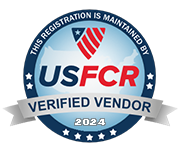The treatment for healthcare security calls for a converged approach
Disconnected cyber and physical security systems are paving the way for data breaches
The healthcare industry is facing an increasingly complex threat landscape. The threat of cyber–attacks, theft of patient information, and physical security breaches poses a significant risk to healthcare organizations. The traditional approach of securing healthcare facilities with physical security measures is no longer sufficient. In today’s digital age, healthcare organizations must take a holistic approach to security that integrates cyber–physical security, physical identity access management, and visitor management to address the evolving security threats and gaps.
The prescription: Bringing together cyber and physical security
According to the 2023 SIA Security Megatrends report, security convergence is still top of mind for security leaders as it once again lays claim to the throne. There are three ways to look at it: you can keep your systems disconnected, choose not to connect but create strongly interrelated teams, or go the cyber–physical convergence route. If you chose the last one, you’re already a step ahead.
The new heart of healthcare security is Identity
Physical identity access management (PIAM) is a critical component of healthcare security. PIAM systems provide centralized management of access to physical spaces, devices, and data. With PIAM, healthcare organizations can ensure that only authorized individuals have access to sensitive information, equipment, and areas. By integrating PIAM with other security systems, healthcare organizations can create a seamless and secure environment that ensures only the right people have access to the right information.
Closing the healthcare visitor security gap
Visitor management is another key aspect of healthcare security. Hospitals and healthcare facilities receive a large number of visitors every day, including patients, family members, vendors, and other service providers. With visitor management systems, healthcare organizations can ensure that visitors are properly identified, authenticated, and authorized before they are granted access to sensitive areas. Visitor management systems can also provide real-time tracking of visitors, which can be useful in emergency situations.
Urgent care: 4 healthcare security gaps that need attention
Healthcare organizations must take a comprehensive approach to security that integrates cyber-physical security, physical identity access management, and visitor management. This approach can help address the following security gaps:
- Inadequate physical and digital access control governance: Traditional physical security measures, such as locks and keys, are no longer sufficient to protect healthcare facilities. Cyber-physical security and PIAM can help healthcare organizations implement more robust access controls that ensure only authorized individuals have access to sensitive areas and information.
- Insider threats: Healthcare organizations must address the risk of insider threats, including employees, contractors, and other insiders who may have access to sensitive information. PIAM can help healthcare organizations monitor and control access to sensitive information, devices, and areas, reducing the risk of insider threats.
- Physical security breaches: Healthcare facilities are vulnerable to physical security breaches, such as theft, vandalism, and active shooter incidents. By integrating cyber-physical security, PIAM, and visitor management, healthcare organizations can create a more secure environment that can prevent and respond to physical security breaches.
- Cybersecurity threats: Cyber-attacks on healthcare organizations have become increasingly common and sophisticated. By adopting a proactive approach to cybersecurity that includes threat detection and response, access controls, and incident response planning, healthcare organizations can reduce the risk of cyber-attacks and mitigate the damage caused by successful attacks.
Contact us to learn how we can help your organization improve processes, close security gaps and create a better experience for all: https://alertenterprise.com/news/solution-sheet/healthcare/

